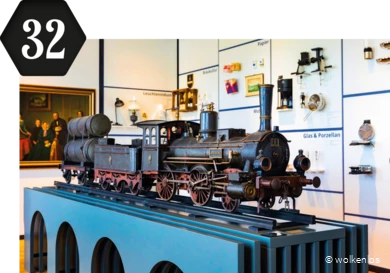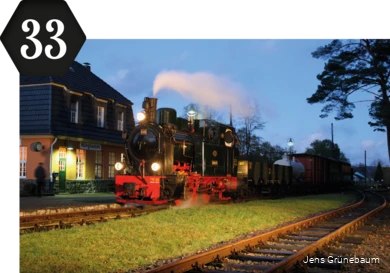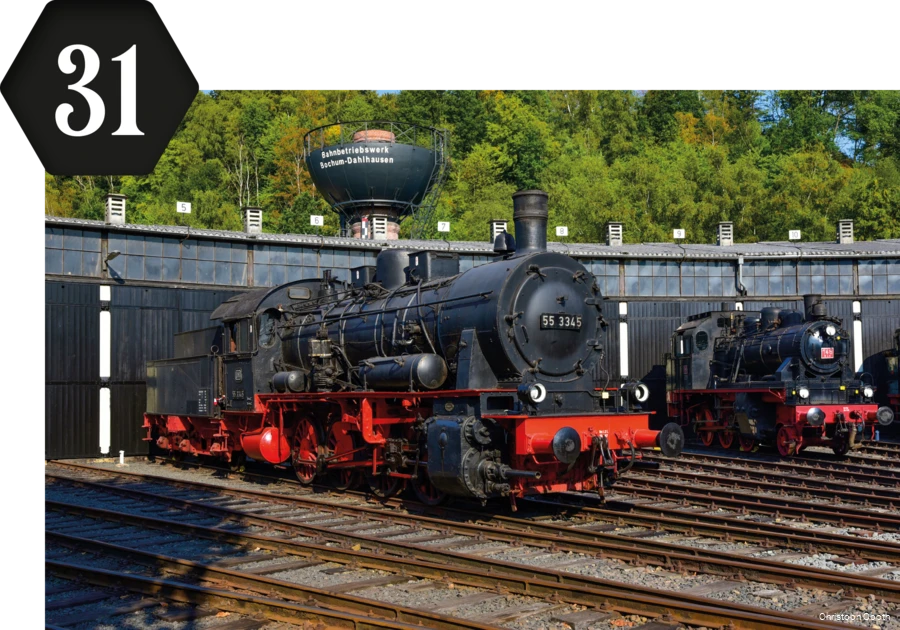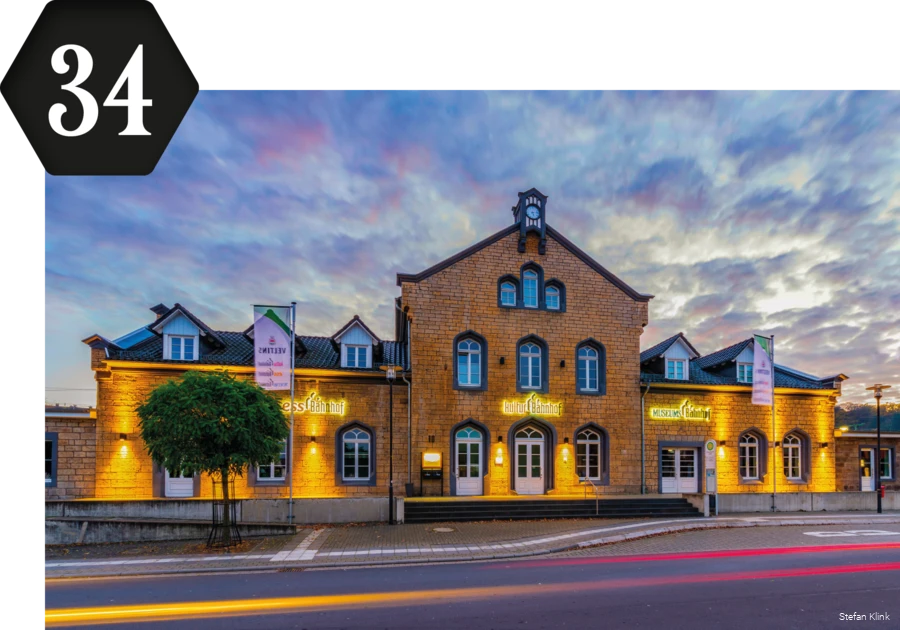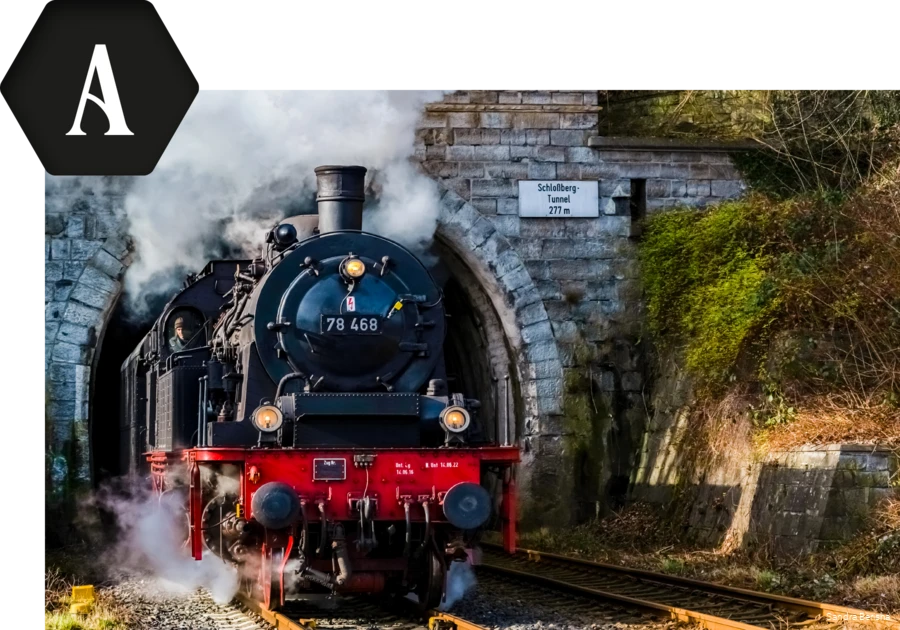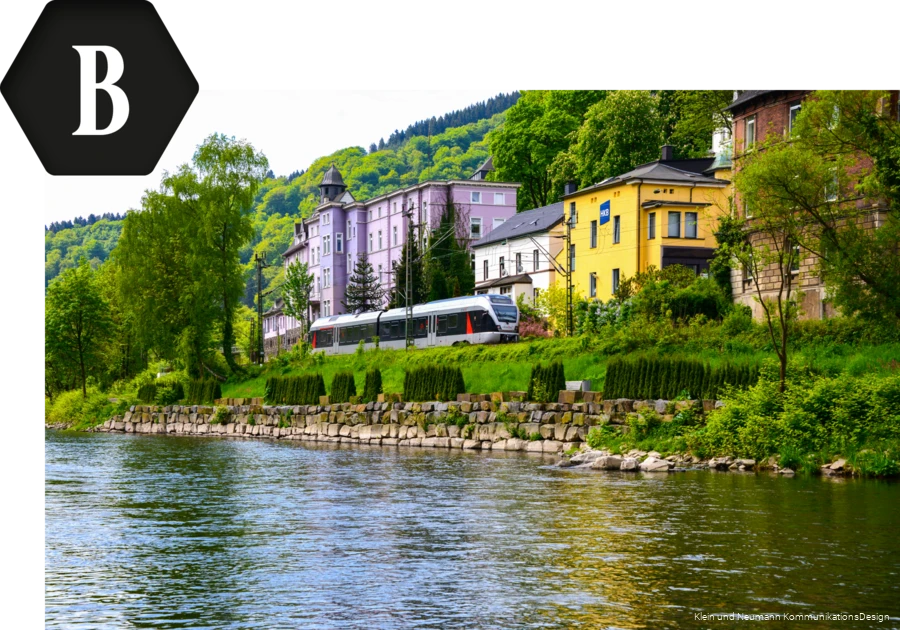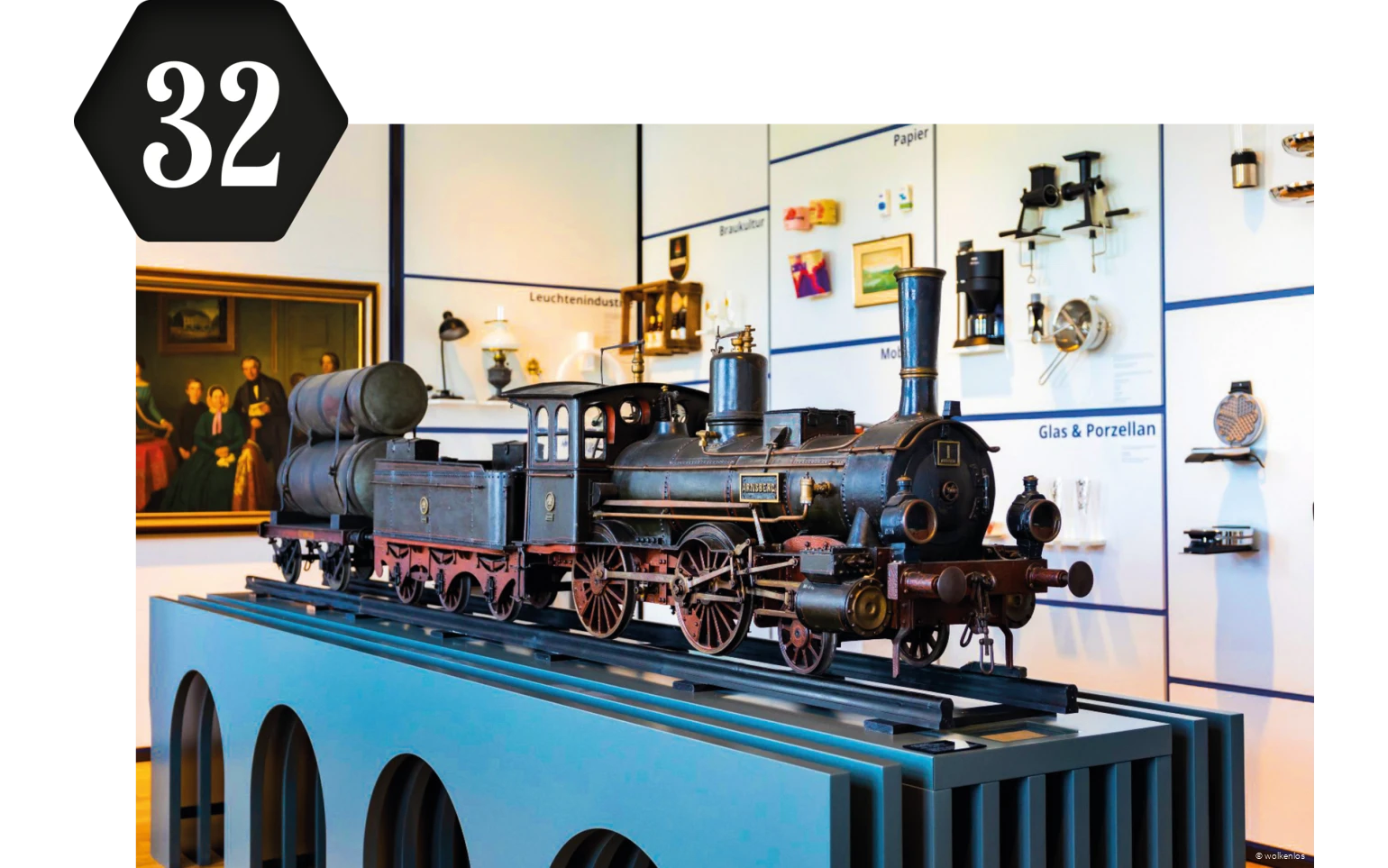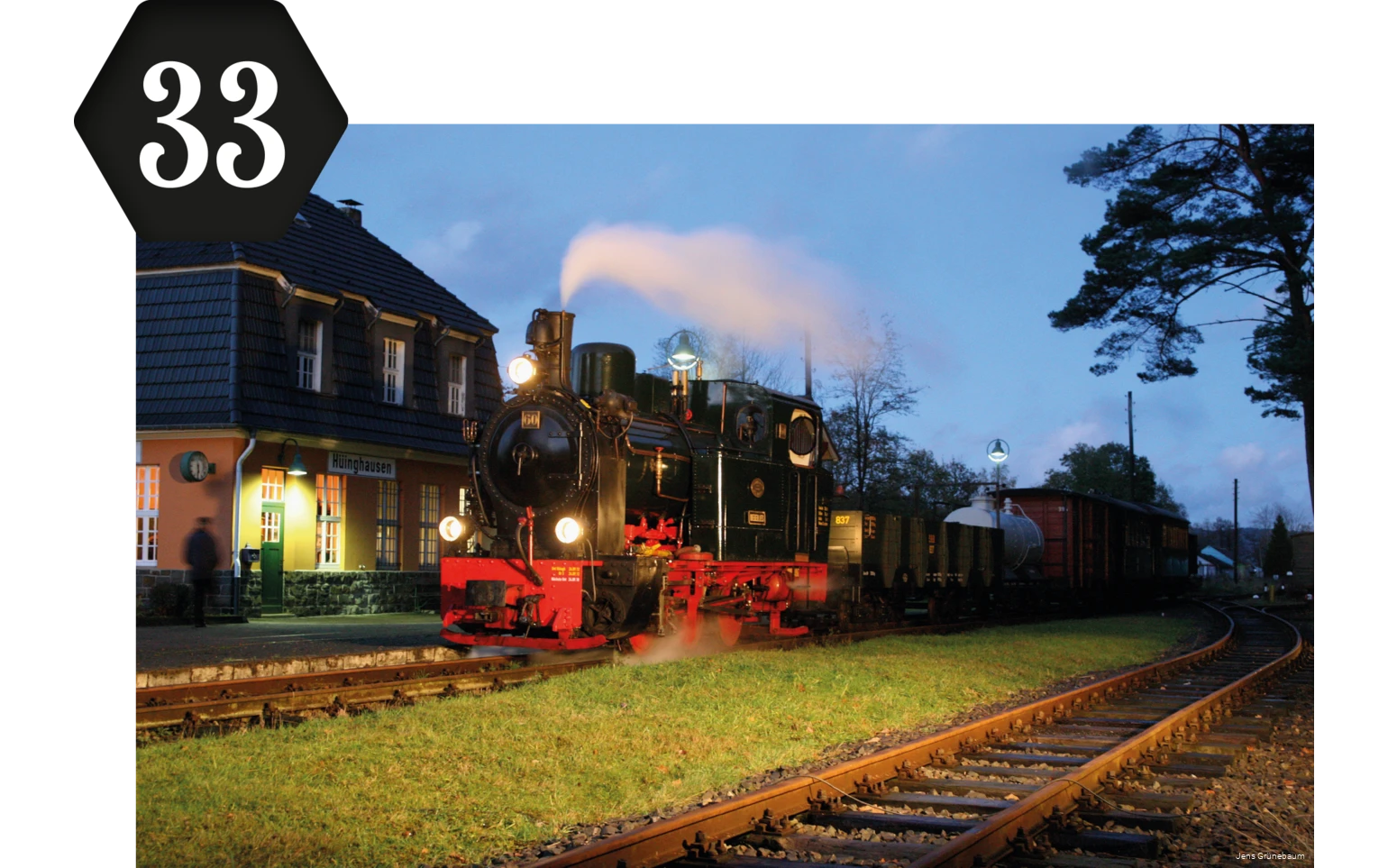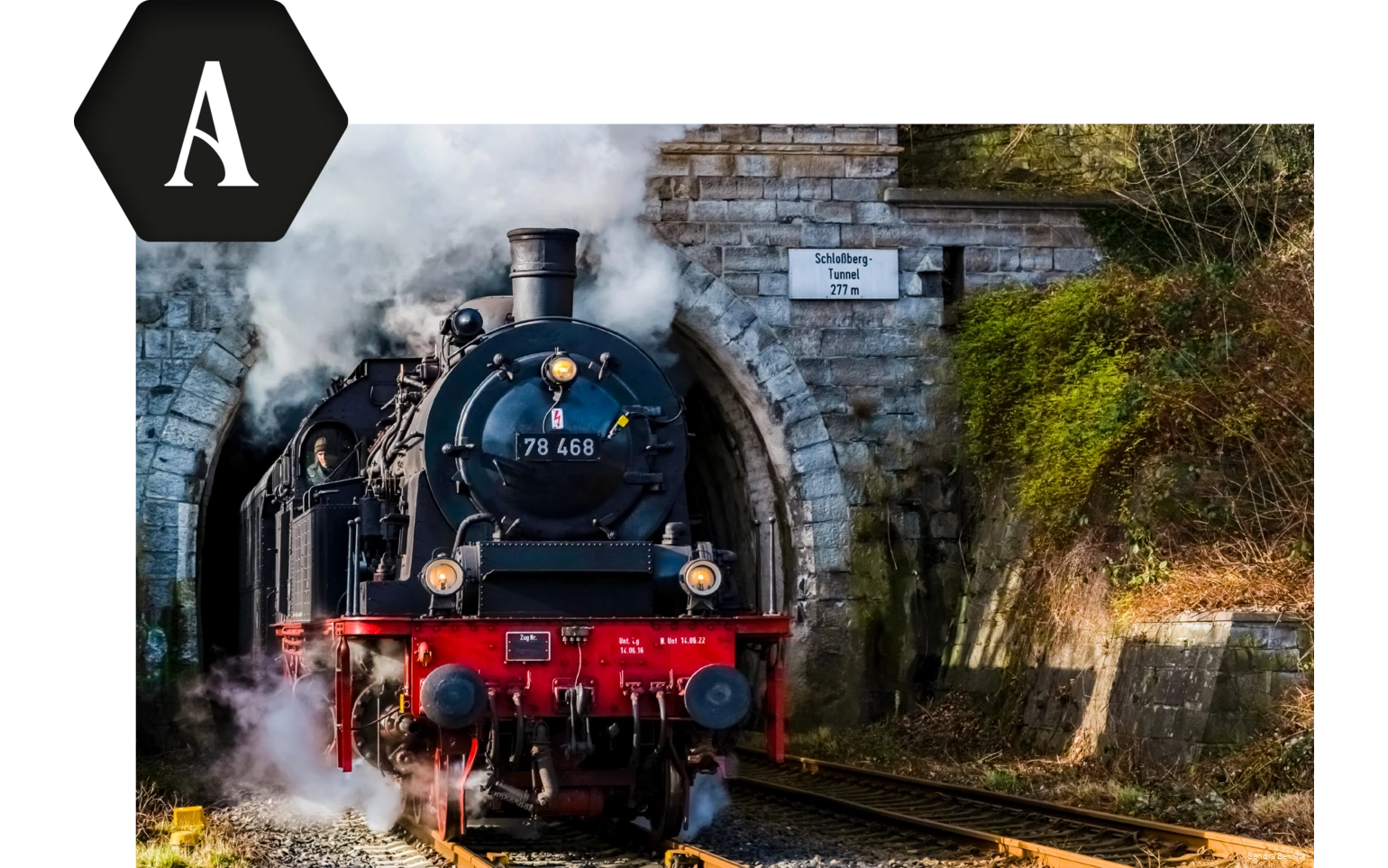11 tunnels, 24 bridges, 106 kilometres packed with curves: the construction of the Ruhr-Sieg Railway is a massive undertaking that pays off! Even before it is opened in 1861, new ironworks, rolling mills, ore mines and other businesses are built alongside the later line. Eventually, more than 120 freight trains a day are operated there. As a result, the mining and smelting industry in the Siegerland region benefits from considerably lower transport costs - with the price of hard coal alone dropping by two-thirds! - and a boost against the English competition. In turn, the iron ore shipments from the Siegerland start to bring the smelting works in the Ruhr District to full bloom. The access to smaller valleys by light and branch railways stimulates even remote industries and ensures the supply of the population in years of poor crops.
The amount of traffic on the Ruhr River Line is less significant. A particular success comes with the middle section between Düsseldorf and Hagen, opened in 1874: from the very beginning it substitutes the freight transport on the Ruhr in such a profound way that the boat services, which had been flourishing until then, collapse immediately. The "Obere Ruhrtalbahn" ("Upper Ruhr River Line") is designed primarily as a long-distance route from Hagen towards Kassel, but in the Neheim-Hüsten area it also provides momentum for local lime and steel industries. The construction of the German Wall makes it unattractive as a west-east axis. Recently, it has gained significance again – as a connection between the Ruhr area and the winter sports resorts of Winterberg and Willingen.
All railway travel destinations
On this Google map you can find all highlights and other destinations of the steel time travel from the category railway. So you can navigate and plan easily. Alternatively, you can download our overview map with all info as a PDF file.
